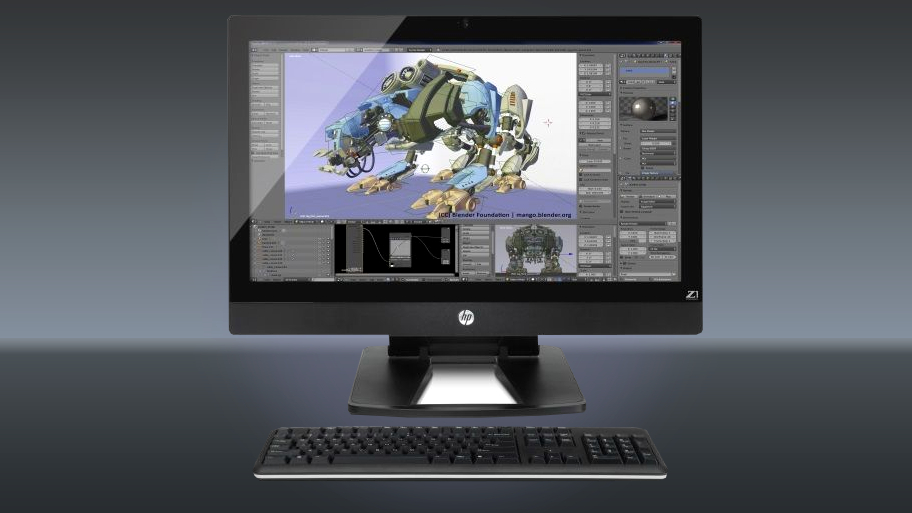Why you can trust TechRadar
We Liked
As a high-end workstation, the HP Z1 G2 is a great update from its predecessor. Having a faster Quadro K4100M GPU makes all the difference for 3D design.
Although it's a pricey addition (£140 for the IO card), the option of 20 Gb/s Thunderbolt 2 is almost too fast to resist and the option of 32GB of ECC memory is essential for mission-critical design work.
The screen is mostly excellent as well with high brightness levels that really blow you away.
And the ability to open up the HP Z1 G2, add extra storage, swap out hard disks, or simply clean the dust out is very useful and a great achievement on HP's part.
But perhaps the best aspect of the HP Z1 G2 is how it's the only all-in-one that offers workstation-class performance. There aren't many other all-in-ones with ECC memory, Xeon processors or Quadro cards.
We disliked
The limits on the CPU and GPU upgrade paths prevent the HP Z1 G2 from completely surpassing traditional desktop workstations. While a 20-core behemoth of a computer isn't necessary to run Call Of Duty, it might be for CAD engineers at Pixar, Ferrari or Boeing, but the HP Z1 G2 is limited to four cores only.
Similarly, with only four memory slots, a practical limit of 32GB memory is a problem if your workload is particularly demanding. Desktop workstations can now be ordered with 128GB, and there are indeed many studios that require that much.
Therefore it could be argued that the user-upgradeable design of the HP Z1 G2 is ever so slightly gimmicky. It's still not as flexible as a traditional desktop computer.
With the high speeds possible from external Thunderbolt 2 devices, internal storage isn't quite as important as it once was. But having said that, it's great to see upgradeable internals is an option rather than a restriction.
The entire unit is ridiculously bulky. The mechanism for folding the unit over in order to lift up the screen requires a really hard push, and the components take some force to pull out from their locations. At one point we were worried we'd broken this expensive computer because the Quadro K4100M became stuck (don't worry HP, we fixed it).
It's also worth noting that the Xeon v3 processor is based on Intel's Ivy Bridge design, rather than the newer Haswell architecture. Although Haswell has produced only small improvements to desktop processor performance, it's not yet available for the Xeon lineup.
Verdict
Although the first-generation HP Z1 felt like a proof of concept, the HP Z1 G2 is a truly powerful all-in-one. It may not be quite enough to make desktop 3D workstations obsolete, but it undoubtedly has a place in design studios.
It goes toe-to-toe with Apple's most high-end 27-inch 2013 iMac which can be configured with a Core i7 processor, and Nvidia GTX 780M graphics card. That machine might make a better choice for gaming (when running Windows in bootcamp mode) but it lacks ECC memory support or upgradeable storage.
Having an upgradeable all-in-one is refreshing when so many other manufacturers choose to seal their units shut, allowing only memory upgrades at most. We'd love to see HP produce a gaming-focused version of the Z1, and refine the design to make it less bulky (perhaps with a slightly smaller screen).
